LITS Annual Report: Research
 In facilitating our research mission, LITS strengthened its research infrastructure, engaged in multiple outreach initiatives, and completed crucial renovation and construction projects.
In facilitating our research mission, LITS strengthened its research infrastructure, engaged in multiple outreach initiatives, and completed crucial renovation and construction projects.
Research IT Infrastructure
The LITS Research Informatics and Data Solutions teams have continued to mature the research information technology architecture over the past year. The system architecture includes the Emory Research Subject Registry for subject and consent management, the Laboratory Information Management System (LIMS) to manage research biospecimens, REDCap for electronic capture of clinical and other data related to research studies integration with additional data extracted from the Emory Healthcare Clinical Data Warehouse (CDW). These systems formed the basis for supporting research biobanking across the enterprise by providing linkage of biospecimen data with clinical annotations and information on informed consent.
Several biorepositories have been implemented using these systems including multiple site studies with Emory serving as a central biobank. A key component of the architecture is real-time integration of all systems in the architecture utilizing the Emory Enterprise Service Bus (ESB) and the provisioning of a common, globally unique, identifier that is populated to all systems in the architecture as new subjects are created. This global identifier enables more efficient aggregation of subject data across all systems into study-specific data schemas or marts to support analysis and operational reporting.
Over the past year the LITS Research Informatics and Data Solutions teams have worked with the Neurology Department to migrate their research system infrastructure to utilize the ERSR, REDCap and LIMS and have created a research-specific data mart including data from multiple sources including the LITS hosted systems, the CDW and other sources.
 In addition to management of data related to consented research subjects, the Neurology Department had a requirement for management of the recruitment, contact and follow-up for potential research subjects. Several solutions were evaluated for this purpose, leading to an initial implementation of an open source product, Sugar Customer Relationship Management System (CRM). Sugar CRM had several limitations that lead to evaluation of more feature-rich CRM systems, resulting in the selection of Salesforce CRM for this purpose. Salesforce is currently in implementation phase to support several studies in the Neurology Department and will be fully integrated into the research architecture utilizing real-time integration via the ESB.
In addition to management of data related to consented research subjects, the Neurology Department had a requirement for management of the recruitment, contact and follow-up for potential research subjects. Several solutions were evaluated for this purpose, leading to an initial implementation of an open source product, Sugar Customer Relationship Management System (CRM). Sugar CRM had several limitations that lead to evaluation of more feature-rich CRM systems, resulting in the selection of Salesforce CRM for this purpose. Salesforce is currently in implementation phase to support several studies in the Neurology Department and will be fully integrated into the research architecture utilizing real-time integration via the ESB.
Once the deployment of Salesforce is complete the research architecture will provide an integrated end-to-end solution for supporting research studies from initial recruitment to consent for specific studies, clinical data capture, specimen data management and data aggregation for analysis and operations.
 REDCap
REDCap
One of the first and more popular components of research infrastructure is an electronic data capture tool called REDCap. Emory adopted REDCap over five years ago and has steadily seen an increase in usage. This year alone, REDCap has doubled in number of projects, ending the year with 2,863 active user accounts, 136 projects created, 57 projects archived and a total active project count of 335. This year experienced sustained growth in project creation at 136 compared to 126 projects created in FY 14. It is used by a number of key program grants, such as the Atlanta Clinical and Translational Institute (ACTSI) and major research programs, such as the Healthy Aging initiative.
The REDCap system was upgraded three times this year, September 2014, February 2015 and August 2015. With the final upgrade in August, Emory was able to take advantage of the new REDCap mobile app. The mobile app integration allows REDCap user to push their projects from the online version to the mobile app. Once the project structure is on the mobile app data can be collected even when internet is not available. A few projects are beginning to explore this new functionality.
The Emory research community as well as new users in operational support roles across the institution continue to share that REDCap is a user-friendly tool to easily design and develop data collection databases.
In addition to these applications, the LITS organization continues to support different grants and research projects. Two of these have been highlighted below:
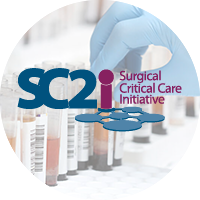 Surgical Critical Care Initiative (SC2i)
Surgical Critical Care Initiative (SC2i)
The Surgical Critical Care Initiative (SC2i) is a multi-institution consortium funded by the DoD's Defense Health Program, bringing together world-class civilian and military research hospitals as well as premier academic centers and research-focused organizations. In the goal of uncovering predictive patterns in biomedical data and developing data-driven clinical decision-support tools for improving surgical critical care and outcomes, clinicians and researchers involved in the SC2i are collecting, biobanking and analyzing biospecimens as well as capturing, sharing and analyzing diverse types of clinical and research data from various associated studies.
Support Outreach for Teaching and Research
ECDS librarians and IT professionals assisted with several other research requests (from 300+ students, 50+ faculty, and librarians) for geospatial and statistical support. ECDS partnered with faculty and graduate student instructors in teaching multiple classes on digital storytelling, video production, and creating a digital identity - engaging 400+ students.
ECDS' co-director taught a record number of graduate students (12) from across the Laney Graduate School in a seminar on digital scholarship. Final projects from four of these students have become scholarly projects being worked on within the center. This year also saw the first two recipients of the Laney graduate certificate in Digital Scholarship and Media studies, a certificate program supported by ECDS.
The Libraries participated in 24,825 reference transactions to assist faculty and students, 1,065 instruction sessions with 17,535 participants, and Rose Library materials were used in instruction sessions 528 times.
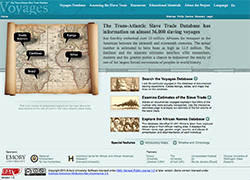 Recent Grants
Recent Grants
ECDS is part of the NEH award for Dr. David Eltis' "Enhancing and Sustaining www.slavevoyages.org" with $324,992 in outright funds. The website’s software platform is being updated to current programming languages and practices, while also adding functionality for scholars from around the globe to contribute to the data on slave trade voyages.
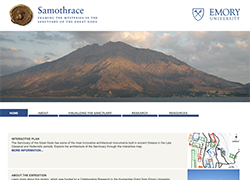 ECDS is instrumental in the NEH awarding $290,500 in outright funds for Dr. Bonna Westcoat's Samothrace project entitled "From the Vantage of the Nike: The Performative Heart of the Sanctuary of the Great Gods of Samothrace,” including 3D modeling of the site.
ECDS is instrumental in the NEH awarding $290,500 in outright funds for Dr. Bonna Westcoat's Samothrace project entitled "From the Vantage of the Nike: The Performative Heart of the Sanctuary of the Great Gods of Samothrace,” including 3D modeling of the site.
ECDS is providing geospatial expertise and assistance in developing research methodologies as part of a $314,437 grant award by the National Oceanic and Atmospheric Administration (NOAA) Fisheries division for assessing the viability of commercial Lionfish fisheries in the Caribbean.
Clinical Trials Dashboard
Emory University leadership wanted more insight into the clinical trials to support their decision-making. Although they did have access to reports and spreadsheets, leadership wanted more information and a way to interact with the data more intuitively.
But there were complexities. Data was stored across multiple systems, each with different variables and different definitions for similar terms. And we did not have a good visualization tool in which to manage the data.
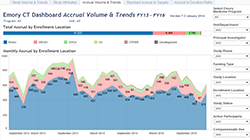 For almost a year, the team worked to aggregate the data sources, assisted in standing up Tableau, and created multiple dashboards around the clinical trials data. The team worked with stakeholders, asked questions, and worked to define terminology. The results are five dashboards visualizing data about study volume and trends, common study attributes, enrollment volume and trends, and actual enrollments to target enrollments.
For almost a year, the team worked to aggregate the data sources, assisted in standing up Tableau, and created multiple dashboards around the clinical trials data. The team worked with stakeholders, asked questions, and worked to define terminology. The results are five dashboards visualizing data about study volume and trends, common study attributes, enrollment volume and trends, and actual enrollments to target enrollments.
Now leadership has the opportunity to look at the historic trends of the number of trials by clinical site throughout the years. Or, they can pull up studies that are trending well in their enrollment to look for patterns or lessons learned to help other investigators.
RISK Study
Over the past three years, LITS teams have worked with Dr. Subra Kugathasan's research group on the creation of a consortium-wide biorepository solution to support the RISK Stratification study across multiple sites. The purpose of the RISK study is to enroll pediatric patients at the time of diagnosis of Crohn's disease to participate in a prospective long-term study to understand the disease progression.
The largest study of its kind, the RISK study collects patient biospecimen (such as blood, serum, stool, tissue biopsy etc.) for identifying genetic, clinical, microbial, and immunologic markers. By integrating and contrasting the biospecimen generated data with observed disease progression of the patient, RISK investigators are currently trying to make a disease prediction model, which will forecast complicated versus uncomplicated disease as well as response to therapy. This study is currently operating across 29 centers with over 1,700 patients enrolled.
WebEase
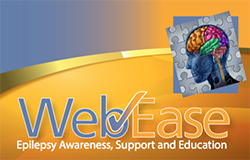 WebEase is an internet self-management program for people with epilepsy. It is the first-ever evidence-based online program for epilepsy self-management. The goal is to offer a program that supports the management of epilepsy by people with epilepsy. The program is based on proven techniques of motivational interviewing and stages of change. Before offering WebEase to the general public, there will be testing the program among volunteers with epilepsy. A WebEase application for mobile devices is under development. The plan is to use the application as a prototype for future Emory mobile applications supporting self-management of other disorders. WebEase consists of a personal journal in which users track seizures, medication, and stress and sleep patterns, plus three interactive modules on medication, stress, and sleep.
WebEase is an internet self-management program for people with epilepsy. It is the first-ever evidence-based online program for epilepsy self-management. The goal is to offer a program that supports the management of epilepsy by people with epilepsy. The program is based on proven techniques of motivational interviewing and stages of change. Before offering WebEase to the general public, there will be testing the program among volunteers with epilepsy. A WebEase application for mobile devices is under development. The plan is to use the application as a prototype for future Emory mobile applications supporting self-management of other disorders. WebEase consists of a personal journal in which users track seizures, medication, and stress and sleep patterns, plus three interactive modules on medication, stress, and sleep.
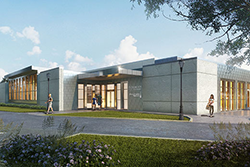 Library Service Center
Library Service Center
In collaboration with Georgia Institute of Technology the Libraries have worked to plan the organizational structure, policies, staffing, and equipment and technology needs to operationalize the new Library Service Center. The construction of the Center was completed in October of 2015. Teams at both Emory and Georgia Tech have worked diligently in preparation for operations and ingest.
Materials from both institutions will be ingested through the spring using an accelerated process. By summer of 2016, ingest will be complete, and all collections currently in storage at Emory will be relocated and serviced at the Center.
The creation of the Library Service Center also marks the beginning of a shared collection available to both institutions. The collaboration will continue to expand the shared collection retrospectively and prospectively as permitted, and both libraries will work to develop other related opportunities for collaboration.
"The clinical trials dashboard has been instrumental in providing a comprehensive tool for both investigators and executives to efficiently retrieve in-depth clinical trials data from multiple authoritative sources. It allows the user to customize the view to meet their needs at the click of a mouse. "
Robin Ginn
Executive Director
Office for Clinical Research